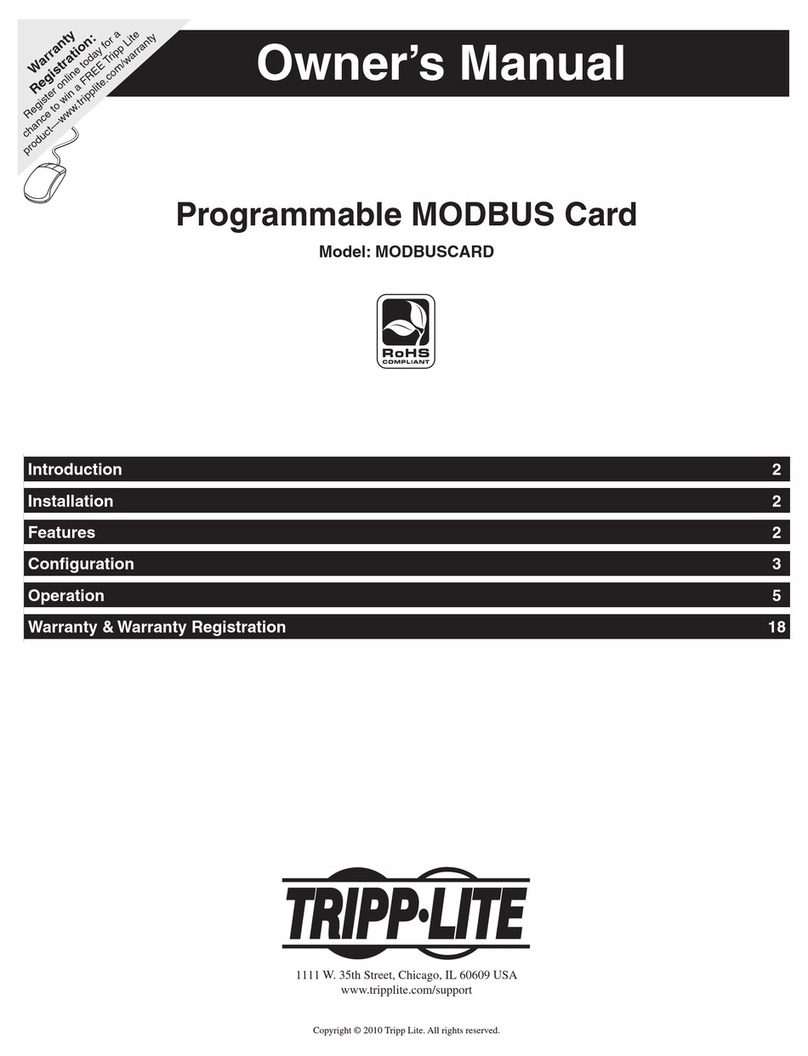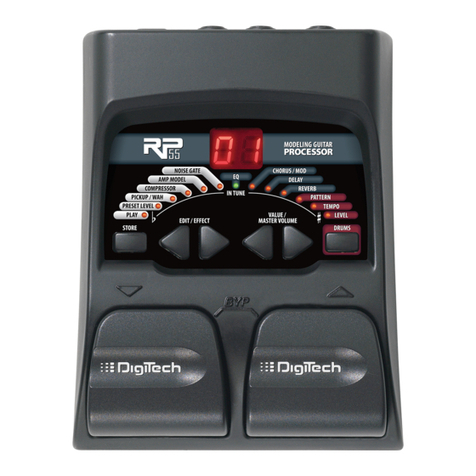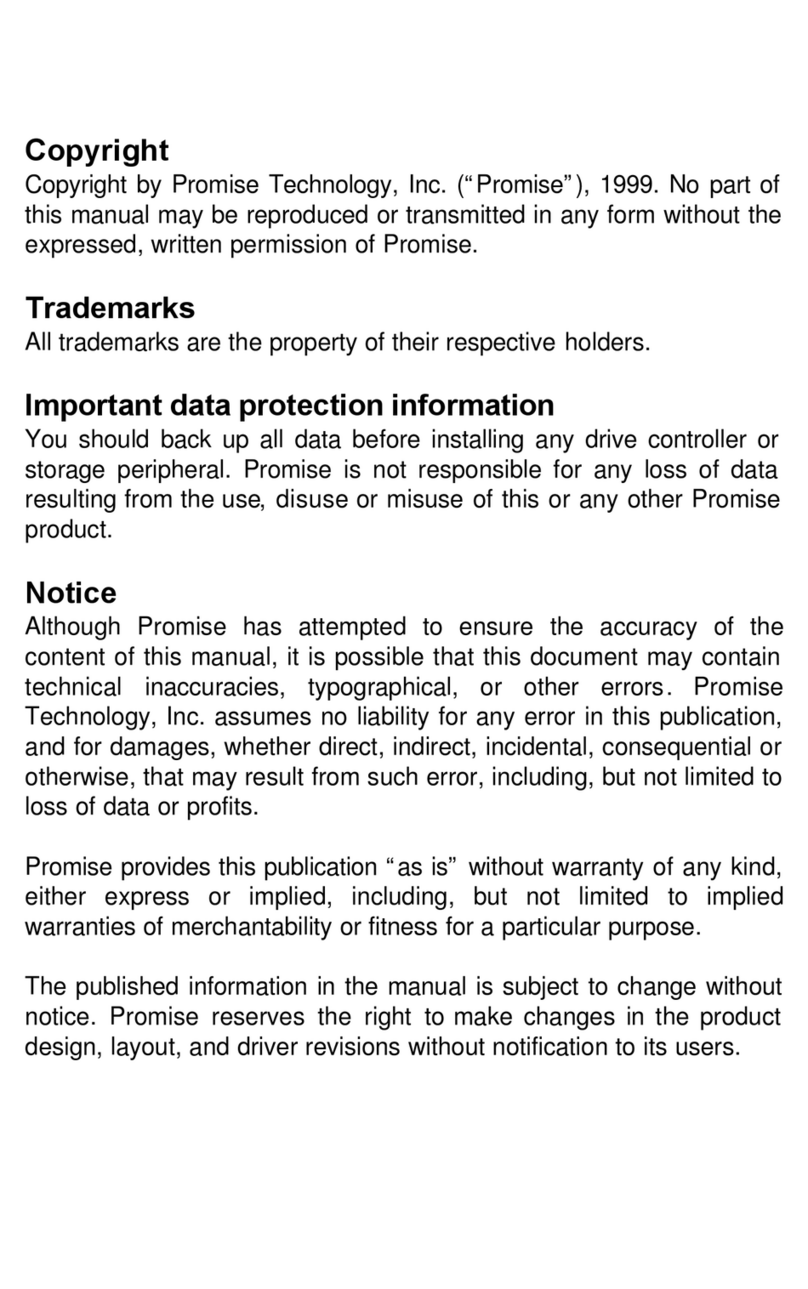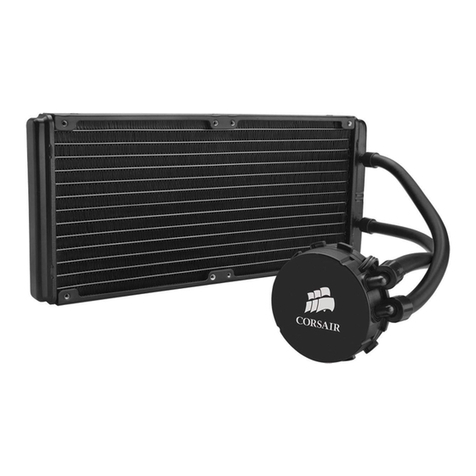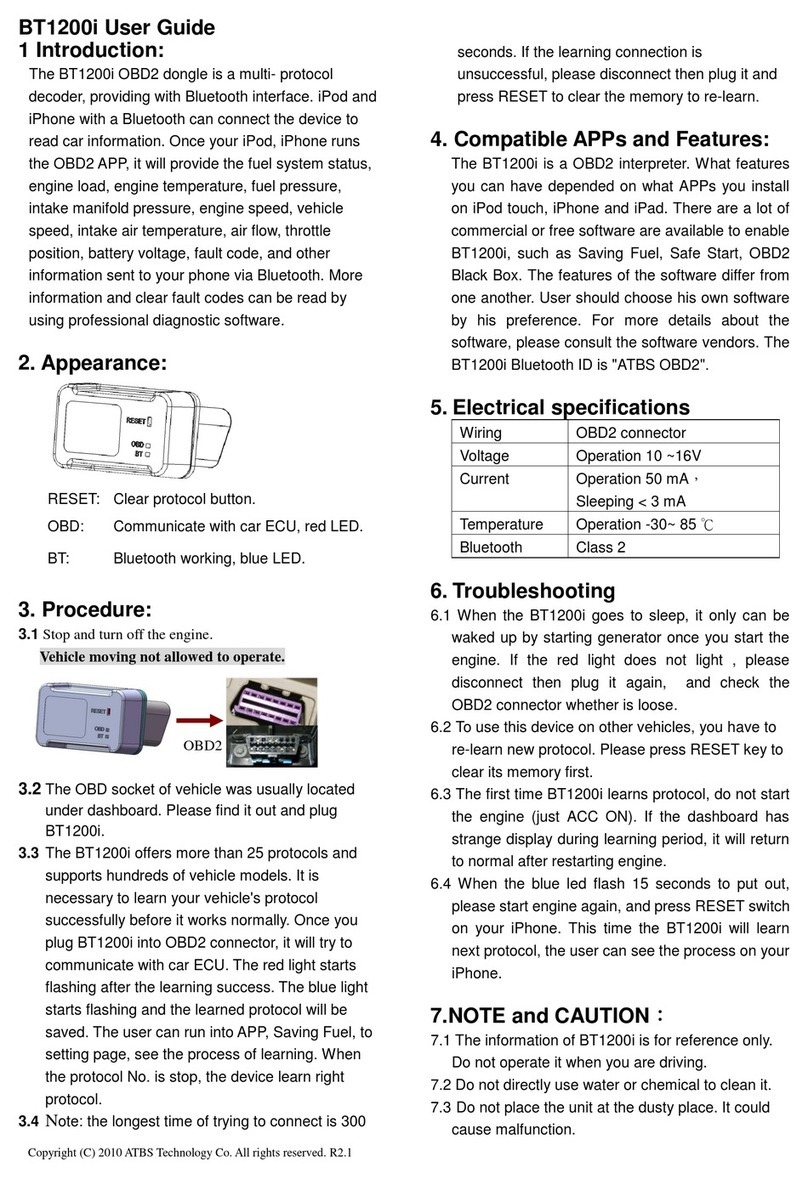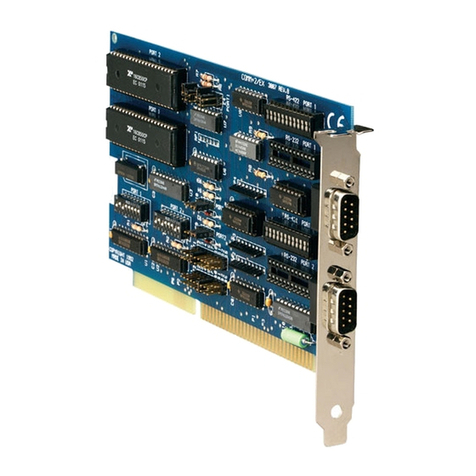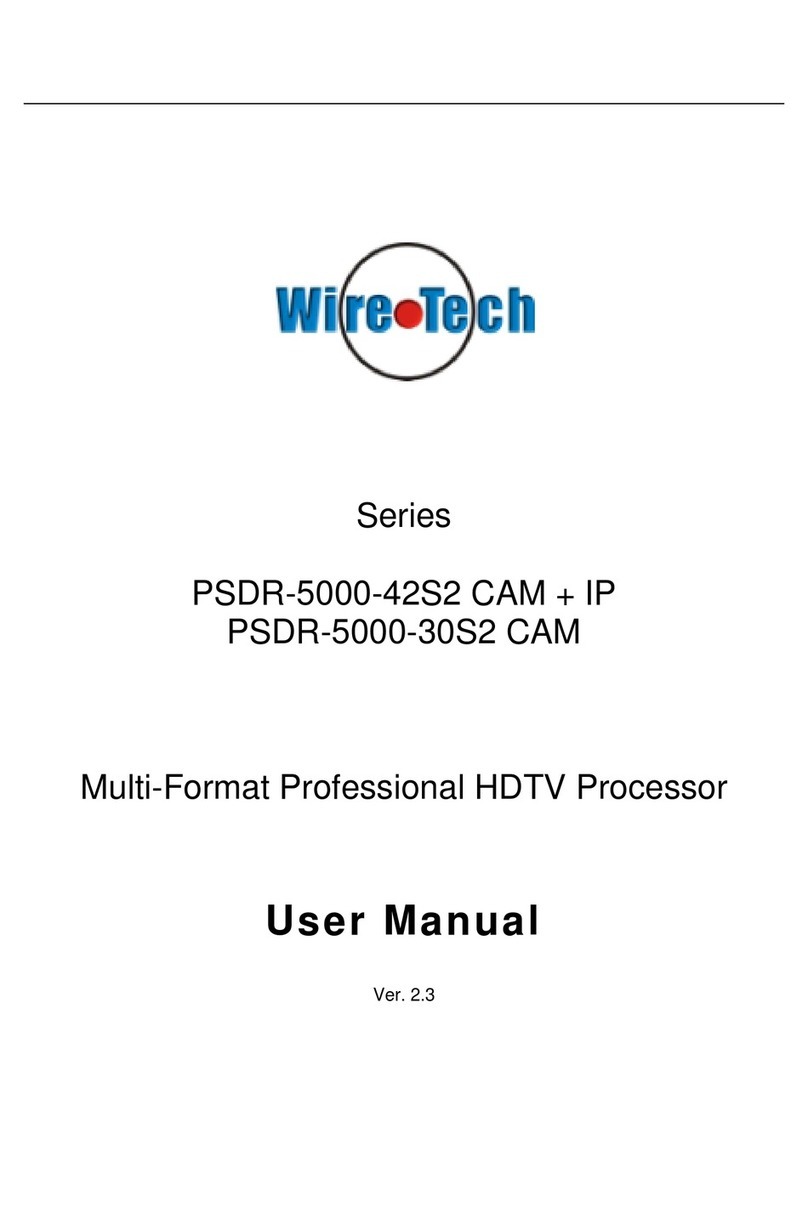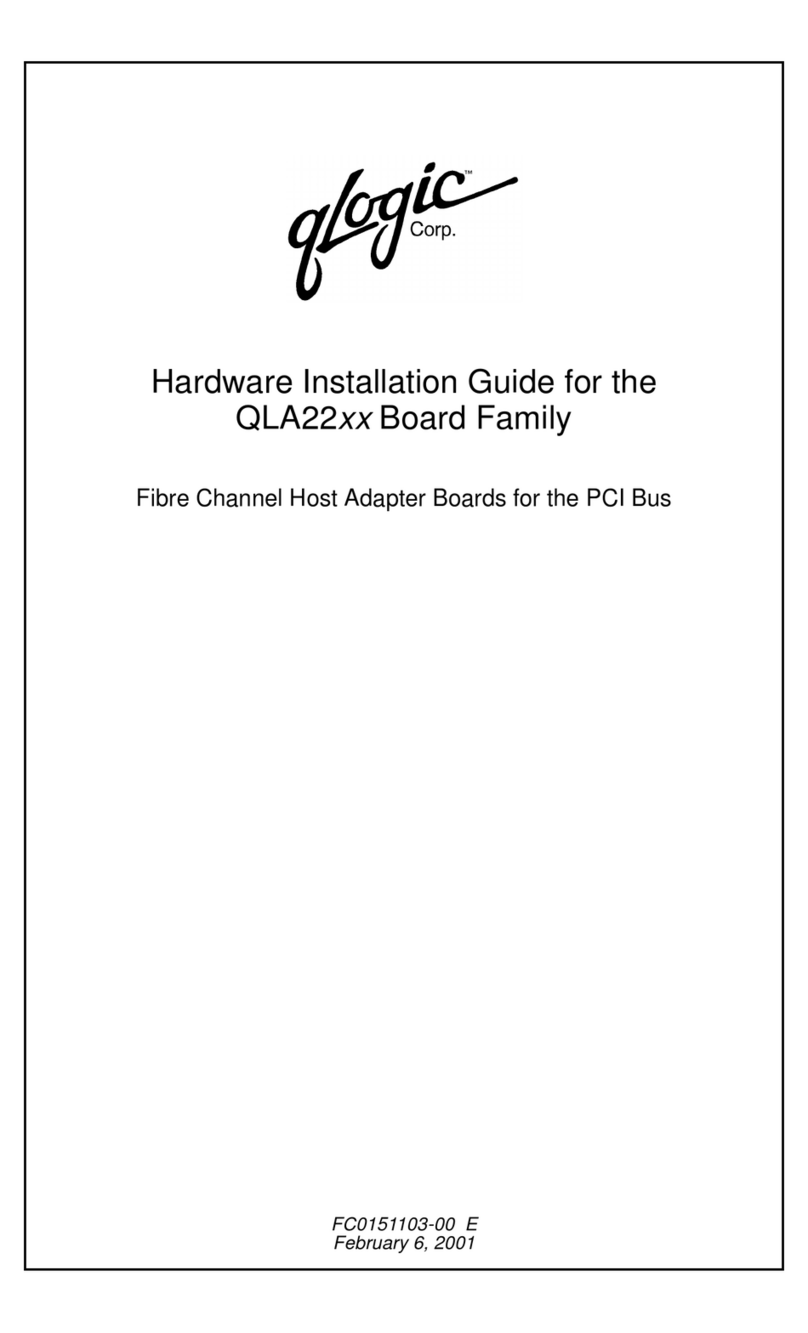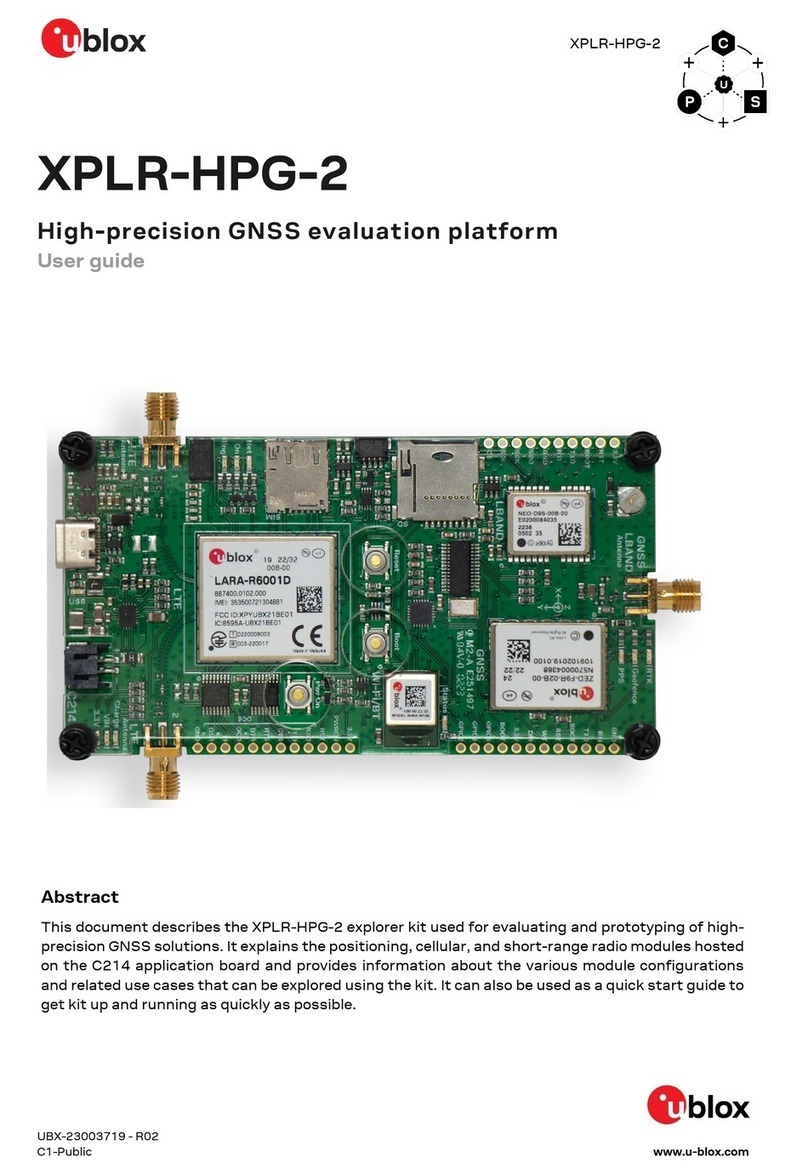Madge Networks CrossFire 8650 User manual

DOC-7090/1.0
CrossFireTM 8650/8651
High-Speed Token-Ring UEM
Guide to Operation
865x.Book Page 1 Wednesday, October 6, 1999 2:31 PM

865x.Book Page 2 Wednesday, October 6, 1999 2:31 PM

CrossFireTM 8650/8651
High-Speed Token-Ring UEM
Guide to Operation
865x.Book Page i Wednesday, October 6, 1999 2:31 PM

ii
CrossFire 8650/8651 UEM Guide to Operation, DOC-7090 v. 1.0
Trademarks
Madge and the Madge Logo are trademarks, and in some jurisdictions may be registered trademarks, of
Madge Networks or its affiliated companies.
ClearSight and CrossFire are trademarks, and in some jurisdictions may be registered trademarks, of
Olicom A/S or its affiliated companies.
Other trademarks appearing in this document are the property of their respective owners.
Copyright
Madge Networks reserves the right to modify the information given in this publication without prior
notice. The warranty terms and conditions applicable for your purchase of this product are shipped with
the product.
All rights reserved. No part of this publication may be reproduced, stored in a retrieval system, or
transmitted, in any form or by any means, electronic, mechanical, photocopying, recording or otherwise,
without the prior written permission of the publisher.
Publication: DOC-7090 v.1.0
Part number: 710001830
© Copyright 1999 Madge Networks.
The intellectual property within the product is proprietary to Madge and its licensors.
FCC Compliance
This equipment has been tested and found to comply with the limits for a Class A digital device, pursuant
to Part 15 of the FCC Rules. These limits are designed to provide reasonable protection against harmful
interference when the equipment is operated in a commercial environment. This equipment generates,
uses and can radiate radio frequency energy and, if not installed and used in accordance with the
instruction manual, may cause harmful interference to radio communications. Operation of this
equipment in a residential area is likely to cause harmful interference in which case the user will be
required to correct the interference at his own expense.
Warning: This is a Class A product. In a domestic environment this product may cause radio
interference in which case the user may be required to take adequate measures.
This device complies with part 15 of the FCC Rules. Operation is subject to the following two
conditions: (1) This device may not cause harmful interference, and (2) this device must accept any
interference received, including interference that may cause undesired operation.
All rights reserved. No part of this publication may be reproduced, stored in a retrieval system, or
transmitted in any form or by any means, without the prior written permission of the publisher.
Class 1 levels are not considered hazardous.
CLASS 1 LASER PRODUCT
865x.Book Page ii Wednesday, October 6, 1999 2:31 PM

iii
CrossFire 8650/8651 UEM Guide to Operation, DOC-7090 v. 1.0
Declaration of Conformity
We Madge Networks Ltd.
Wexham Springs
Framewood Road
Wexham
Slough, SL3 6PJ
England
declare under our sole responsibility that the products
CrossFire 8650 High-Speed Token-Ring UEM
CrossFire 8651 High-Speed Token-Ring UEM
to which this declaration relates are in conformity with the following standards or other normative
documents
EN 50082-1
EN 61000-3-2
EN 61000-3-3
EN 55022
EN 60950
EN 60825-1
following the provisions of 89/336/EEC Directive and 73/23/EEC Directive.
Modifications
If the device is changed or modified without the express approval of Madge the user may void his or her
authority to operate the equipment.
Safety Notice
➽Danger: To avoid shock hazard, do not connect or disconnect any cables or perform installation,
maintenance, or reconfiguring of the CrossFire 8650 and 8651 UEMs during an electrical storm.
Caution
➽Warning: All RJ-45 connectors must be connected only to safety extra low voltage (SELV) circuits
such as a local area network (LAN).
865x.Book Page iii Wednesday, October 6, 1999 2:31 PM

iv
CrossFire 8650/8651 UEM Guide to Operation, DOC-7090 v. 1.0
865x.Book Page iv Wednesday, October 6, 1999 2:31 PM

v
CrossFire 8650/8651 UEM Guide to Operation, DOC-7090 v. 1.0
Table of Contents
1. Introduction 1
2. Installation 3
Package Contents . . . . . . . . . . . . . . . . . . . . . . . . . 3
Installation Procedure . . . . . . . . . . . . . . . . . . . . . . . 3
Hardware Installation . . . . . . . . . . . . . . . . . . . . . . . . 4
Software Installation . . . . . . . . . . . . . . . . . . . . . . . . 6
TFTP Download . . . . . . . . . . . . . . . . . . . . . . . . 6
Serial Download . . . . . . . . . . . . . . . . . . . . . . . . 7
Cabling . . . . . . . . . . . . . . . . . . . . . . . . . . . . . . . 8
CrossFire 8650 High-Speed Token-Ring UEM (UTP) . . . . . 8
LEDs . . . . . . . . . . . . . . . . . . . . . . . . . . . . . . . . 9
Power-On Self Test . . . . . . . . . . . . . . . . . . . . . . . 10
Configuration . . . . . . . . . . . . . . . . . . . . . . . . . . . 10
Default Configuration . . . . . . . . . . . . . . . . . . . . . 10
3. Console Configuration 11
Introduction . . . . . . . . . . . . . . . . . . . . . . . . . . . . 12
Ports, Port Groups and VLANs. . . . . . . . . . . . . . . . 12
HSTR Virtual Ports and VLAN Tagging . . . . . . . . . . . 12
Virtual Port Restriction . . . . . . . . . . . . . . . . . . . . 13
Ring Number Restriction . . . . . . . . . . . . . . . . . . . 13
General Guidelines . . . . . . . . . . . . . . . . . . . . . . . . 14
Navigating the Menus . . . . . . . . . . . . . . . . . . . . 14
Configuration Overview . . . . . . . . . . . . . . . . . . . . . 15
Port Configuration - HSTR Ports . . . . . . . . . . . . . . . . . 16
Virtual Port Configuration. . . . . . . . . . . . . . . . . . . . . 18
4. Statistics 23
Statistics Menu . . . . . . . . . . . . . . . . . . . . . . . . . . 24
Port Status . . . . . . . . . . . . . . . . . . . . . . . . . . . . 25
Port Statistics . . . . . . . . . . . . . . . . . . . . . . . . . . . 27
General Statistics. . . . . . . . . . . . . . . . . . . . . . . 28
Virtual Port Statistics . . . . . . . . . . . . . . . . . . . . . 34
802.5 Statistics . . . . . . . . . . . . . . . . . . . . . . . . 35
5. Technical Support 37
Contacting Madge Technical Support . . . . . . . . . . . . 38
Appendix A. Abbreviations 39
865x.Book Page v Wednesday, October 6, 1999 2:31 PM

vi
CrossFire 8650/8651 UEM Guide to Operation, DOC-7090 v. 1.0
List of Figures
Figure 1. CrossFire 8650 High-Speed Token-Ring UEM . . . . . . . . 1
Figure 2. Removing the Expansion Slot Cover . . . . . . . . . . . . . 5
Figure 3. Inserting the Module . . . . . . . . . . . . . . . . . . . . . . 5
List of Tables
Table 1. LEDs at the Left on the Front Panel . . . . . . . . . . . . . . 9
Table 2. LEDs at the Right of Every Port . . . . . . . . . . . . . . . . 9
Table 3. HSTR Port Configuration: Status Values . . . . . . . . . . . . 16
Table 4. Virtual Port Configuration: Status Values. . . . . . . . . . . . 18
Table 5. Virtual Port Configuration: Maximum Frame Size . . . . . . . 19
Table 6. Config Loss Values . . . . . . . . . . . . . . . . . . . . . . . 30
865x.Book Page vi Wednesday, October 6, 1999 2:31 PM

vii
CrossFire 8650/8651 UEM Guide to Operation, DOC-7090 v. 1.0
Summary of Contents
Following is a short description of the content of the chapters and appendixes in this
publication:
Chapter 1, “Introduction”, is a general introduction to two Universal Expansion
Modules (UEMs), the CrossFire™8650 High-Speed Token-Ring UEM and the
CrossFire 8651 High-Speed Token-Ring UEM. Unless one of the modules is
mentioned alone, the information in this guide applies to both.
Chapter 2, “Installation”, lists the package contents, describes the front panel,
and explains how to install, connect, configure, and test the modules.
Chapter 3, “Console Configuration”, describes how to use a direct console
connection to set up and configure the modules.
Chapter 4, “Statistics”, lists and explains statistics generated by the modules.
Chapter 5, “Technical Support”, comprises a check list and how to contact
Madge technical support.
Appendix A, "Abbreviations", lists the abbreviations used in this publication.
❏
865x.Book Page vii Wednesday, October 6, 1999 2:31 PM

viii
CrossFire 8650/8651 UEM Guide to Operation, DOC-7090 v. 1.0
865x.Book Page viii Wednesday, October 6, 1999 2:31 PM

1
CrossFire 8650/8651 UEM Guide to Operation, DOC-7090 v. 1.0 1. Introduction
1. Introduction
The CrossFire 8650 High-Speed Token-Ring UEM and CrossFire 8651 High-
Speed Token-Ring UEM from Madge provide 100 Mbps High-Speed Token-Ring
connectivity to the CrossFire 8600 Token-Ring Switch and the CrossFire 8605
Token-Ring Fiber Switch. These high-performance, low-latency modules
seamlessly integrate legacy Token-Ring networks to High-Speed Token-Ring
(HSTR) backbones.
The CrossFire 8650 UEM offers UTP-5 copper connections with RJ-45 interface
connectors. The CrossFire 8651 UEM offers multimode optical fiber connection
with VF-45 interface connectors. You can mount either of them in one of the two
front-panel expansion slots on the CrossFire 8600 and CrossFire 8605 Switches.
Figure 1. CrossFire 8650 High-Speed Token-Ring UEM
The CrossFire 8650 and 8651 UEMs conform to the IEEE 802.5t standard for 100
Mbps High-Speed Token-Ring, and implement the standard DTR MAC protocol.
An HSTR port can connect to a standard HSTR adapter or it can act as a trunk port
and carry traffic from up to 63 VLANs configured in the switch. This is achieved
using standard IEEE 802.1Q VLAN frame tagging. For each VLAN a virtual port
is created that behaves much like an ordinary Token-Ring port.
The module enables standard Token-Ring source routing and supports all the
switching modes implemented in the switch.
Six LEDs on the front panel indicate the overall operational state of the module and
the two ports. Configuration and detailed status information is available from the
switch console or from the graphical management application.
❏
865x.Book Page 1 Wednesday, October 6, 1999 2:31 PM

2
CrossFire 8650/8651 UEM Guide to Operation, DOC-7090 v. 1.0 1. Introduction
865x.Book Page 2 Wednesday, October 6, 1999 2:31 PM

3
CrossFire 8650/8651 UEM Guide to Operation, DOC-7090 v. 1.0 2. Installation
2. Installation
This chapter describes how to install, connect, and start using the CrossFire 8650
or 8651 UEM. The following main topics are covered:
•Package Contents
•Installation Procedure
•Hardware Installation
•Software Installation
•Cabling
•LEDs
•Power-On Self Test
•Configuration
Package Contents
Your CrossFire 8650 or 8651 UEM package contains the following items:
•One CrossFire 8650 High-Speed Token-Ring UEM (UTP)
or
one CrossFire 8651 High-Speed Token-Ring UEM (MMF).
•One CD-ROM containing the Token-Ring switch program and the
Switch Manager for Windows and HP OpenView for Windows as well
as user documentation in PDF format.
•One CrossFire 8650/8651 High-Speed Token-Ring UEM Guide to Operation
(this manual).
Installation Procedure
The CrossFire 8650 and 8651 UEMs are packaged with software for both the
module itself and the CrossFire 8600 and CrossFire 8605 Switches. The switch is
also supplied with both software images. To ensure compatibility between the
module and the switch, install the latest of the two software versions.
Install the module as follows:
1. Install the software in the CrossFire 8600 or 8605 Switch. See the switch
manual for instructions on downloading the software.
865x.Book Page 3 Wednesday, October 6, 1999 2:31 PM

4
CrossFire 8650/8651 UEM Guide to Operation, DOC-7090 v. 1.0 2. Installation
2. Optional: Clear the NVRAM in the base switch. This will erase all
configuration in the switch.
3. Reset the switch to activate the new software.
4. If you cleared NVRAM in step 2, re-establish the switch configuration. Verify
that the switch is operating correctly.
5. Power off the switch.
➽Warning: Be sure to install a version of the base switch software that supports the
CrossFire 8650 and 8651 UEMs (version 3.00 or later) before physically inserting
the module. Otherwise, the switch will not recognize it and this may in some cases
corrupt the configuration.
6. Physically install the module in one of the two expansion slots. See section
“Hardware Installation”on page 4 for detailed instructions.
7. Power on the switch.
8. Download the software for the module. See section “Software Installation”on
page 6 for detailed instructions.
9. If you plan to use the graphical switch manager application, install it now.
10. If necessary, configure the module. For details, see section “Configuration”on
page 10 as well as Chapter 3, “Console Configuration”.
Hardware Installation
To install the CrossFire 8650 or 8651 UEM in a CrossFire 8600 or CrossFire 8605
Switch:
1. Power off the base switch by unplugging the power cord from the power outlet.
If the switch uses the optional CrossFire 8311 Redundant Power Unit, unplug
the connector from the base switch as well.
2. Select an empty expansion module slot in which to install the UEM. You can
install the UEM in either of the slots.
3. Loosen the two screws on the expansion slot cover plate and remove the cover.
See Figure 2. Keep the plate for use in the event that the expansion module is
later removed.
865x.Book Page 4 Wednesday, October 6, 1999 2:31 PM

5
CrossFire 8650/8651 UEM Guide to Operation, DOC-7090 v. 1.0 2. Installation
Figure 2. Removing the Expansion Slot Cover
➽Warning: Expansion modules are not hot-swappable. If you install or remove
expansion modules while the power to the switch is on, damage may occur to the
switch and to the module.
4. Carefully insert the module into the rails on each side of the expansion slot and
slide the module back until the connector on the module is seated into the
connector at the back of the slot. See Figure 3. When the module is fully seated,
the module faceplate will be flush with the front of the base switch.
Figure 3. Inserting the Module
5. Secure the module with the two attached screws.
6. Reapply power to the switch.
32 5
4876109151211 1413 1716 19
18 20
STACK-LINK
ATTA CH
RXTX
DIAGPWR RSTERRMANAGEMENT
TOKEN-RING SWITCH
8600
1
5
32 5
4876109151211 1413 1716 19
18 20
STACK-LINK
ATTACH
RXTX
DIAGPWR RSTERRMANAGEMENT
158761091211 13
ERR
DIAG
ACTIVITY
12
HIGH-SPEED TOKEN-RING
LINK
8600 TOKEN-RING SWITCH
865x.Book Page 5 Wednesday, October 6, 1999 2:31 PM

6
CrossFire 8650/8651 UEM Guide to Operation, DOC-7090 v. 1.0 2. Installation
Software Installation
Before you can use your CrossFire 8650 or 8651 UEM, you must install the module
software image, which you can download to the UEM via TFTP or a serial line.
TFTP Download
1. On the disks supplied with the module, find the software image file. The file
name is of the form 865Xabc.BIN, where abc is the version number of the
software. For example, 865X400.BIN is version 4.0.0 of the software image.
2. Copy the software image file to a directory on the TFTP server.
3. On the main menu in the console, select Download/Upload to display the
Download/Upload menu.
4. Select TFTP Download/Upload to display the TFTP Download/Upload
menu:
5. On this menu, set the IP address of the TFTP server. Also, set the download
VLAN (the BRF on which the TFTP server is located).
6. Select HSTR Firmware Download to display the HSTR Firmware TFTP
Download screen.
7. Select HSTR Firmware Download Filename and type the filename of the
software image to download.
8. Select Execute HSTR Image Network Download to start the download.
865x.Book Page 6 Wednesday, October 6, 1999 2:31 PM

7
CrossFire 8650/8651 UEM Guide to Operation, DOC-7090 v. 1.0 2. Installation
While the software is transferred over the network, the console will display
messages describing download activity. When the software has been transferred,
you will see the following messages:
Network download complete. Now transferring to HSTR
Module(s), please wait...
Download of HSTR firmware complete – HSTR module(s)
being reinitialized...
The software image is then programmed into nonvolatile memory on the UEM.
When software installation is complete, the module starts for normal operation, and
the following message is displayed:
Press <RETURN> to continue...
Serial Download
1. On the disks supplied with the module, find the software image file. The file
name is of the form 865Xabc.BIN, where abc is the version number of the
software. For example, 865X400.BIN is version 4.0.0 of the software image.
2. From the main menu, select Download/Upload. The Download/Upload menu
is displayed.
3. Select Serial Link Download. The Serial Link Download screen is displayed.
4. Select HSTR Firmware Download.
5. Using your terminal software, transfer the software image to the module with
the X-Modem protocol. The transfer will take some minutes depending on your
terminal emulator baud rate.
The software image is then programmed into the FLASH memory of the module,
and will remain there until it is replaced. When the software installation is
complete, the module is started for normal operation, and the following message is
displayed:
Press <RETURN> to continue...
865x.Book Page 7 Wednesday, October 6, 1999 2:31 PM

8
CrossFire 8650/8651 UEM Guide to Operation, DOC-7090 v. 1.0 2. Installation
Cabling
The cabling required depends on the version of the module you are installing.
CrossFire 8650 High-Speed Token-Ring UEM (UTP)
The UTP module uses standard UTP-5 copper cables. The maximum cable length
is 100 m (328 feet).
1. Insert the modular RJ-45 jack from either end of a standard UTP-5 cable into
one of the connectors on the UEM front panel.
2. Connect the other end of the cable to either another HSTR switch port
(for example, another module) or an HSTR adapter.
3. If the default Auto port mode is in effect, the port will automatically open in the
appropriate Port or Station mode. Refer to Chapter 3, Console Configuration,
for details on port mode configuration.
The UTP module also supports IBM type 1 STP copper cables (150 Ohm), which
have a maximum length of 100 m (328 feet). To use an STP cable, then balluns with
an RJ-45 connector are required.
CrossFire 8651 High-Speed Token-Ring UEM (MMF)
The MMF module uses multimode 62.5/125 micron fiber cables with a maximum
cable length of 2000 m (6560 feet).
1. Connect a VF-45 optic fiber to the VF-45 connector on the front panel of the
UEM. To ensure a proper connection, it may be necessary to clean the fiber
connectors with a soft tissue dipped in alcohol.
2. Connect the other end of the cable to either another HSTR switch port (for
example, another CrossFire 8650 or 8651 UEM) or an HSTR adapter.
3. If the default Auto port mode is in effect, the port will automatically open in the
appropriate Port or Station mode. Refer to Chapter 3, “Console Configuration”,
for details on port mode configuration.
865x.Book Page 8 Wednesday, October 6, 1999 2:31 PM

9
CrossFire 8650/8651 UEM Guide to Operation, DOC-7090 v. 1.0 2. Installation
LEDs
There are six LEDs on the front panel of a CrossFire 8650 or 8651 UEM. During
normal operation, the two LEDs on the left side of the front panel indicate the
module status:
The two LEDs on the right of every port indicate the port status:
LED Position State Meaning
DIAG (green) Top On Diagnostics are in process.
Off No diagnostics are in process.
ERR (yellow) Bottom On A module failure has occurred.
Off The module is working correctly.
Table 1. LEDs at the Left on the Front Panel
LED Position State Meaning
LINK (green) Top On The port has linked and is
inserted.
Flashing The port is disabled.
Off The port is not inserted.
ACTIVITY
(green)
Bottom Flashing The port is receiving or
transmitting LLC frames.
Note that the ACTIVITY LED
does not flash for MAC frames.
Off There is no LLC traffic on the
port
Table 2. LEDs at the Right of Every Port
865x.Book Page 9 Wednesday, October 6, 1999 2:31 PM

10
CrossFire 8650/8651 UEM Guide to Operation, DOC-7090 v. 1.0 2. Installation
Power-On Self Test
When the switch is powered on, it will run a self-test to ensure that all devices are
working correctly. During this test, the switch will detect and start any CrossFire
8650 or 8651 UEM in its expansion slot.
The module will then perform an internal power-on self-test. The test takes a few
minutes. During this time, the DIAG and ERR LEDs will remain lit and the other
LEDs may turn on and off.
If the test reveals no problems, at the end of the test the DIAG and ERR LEDs will
turn off and the module will enter its normal operational state
If the test reveals a problem, at the end of the test the DIAG LED will turn off but
the ERR LED will remain on. Messages in the message log or on the console will
describe the problem.
Configuration
There are two ways to manage CrossFire 8650 and 8651 UEMs:
•From the switch console, via Telnet or directly with a VT100 terminal
emulator on the RS-232 port.
•Through the SNMP-based graphical management application OC-8840.
Chapter 3, “Console Configuration”, describes console configuration. The
management application is described in its online help.
All configuration parameters are stored by the switch and not by the module. This
means that the modules can be exchanged without reconfiguring the switch.
Note, however, that a UEM’s software image is stored on the module itself and will
follow the module if you move it to another switch.
Default Configuration
When a CrossFire 8650 or 8651 UEM is inserted into an expansion slot for the first
time, the switch will assume the default configuration. Each HSTR port:
•is enabled
•is set to Auto mode
•has one virtual port in the default CRF
This configuration is suitable for connecting both HSTR adapters and other HSTR
switch ports to the default CRF. If more advanced configurations are required, refer
to the Chapter 3, “Console Configuration”for details.
❏
865x.Book Page 10 Wednesday, October 6, 1999 2:31 PM
This manual suits for next models
1
Table of contents
Popular Computer Hardware manuals by other brands
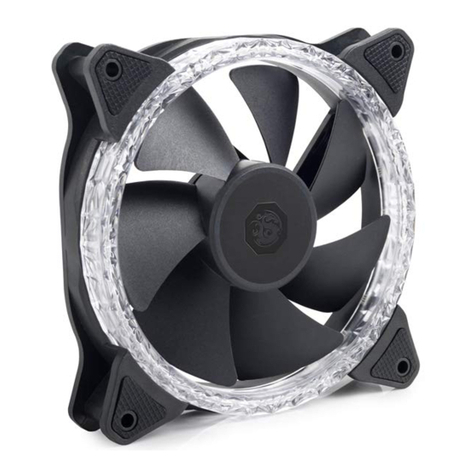
Bitspower
Bitspower Notos Xtal 120 Fan Digital RGB instruction manual
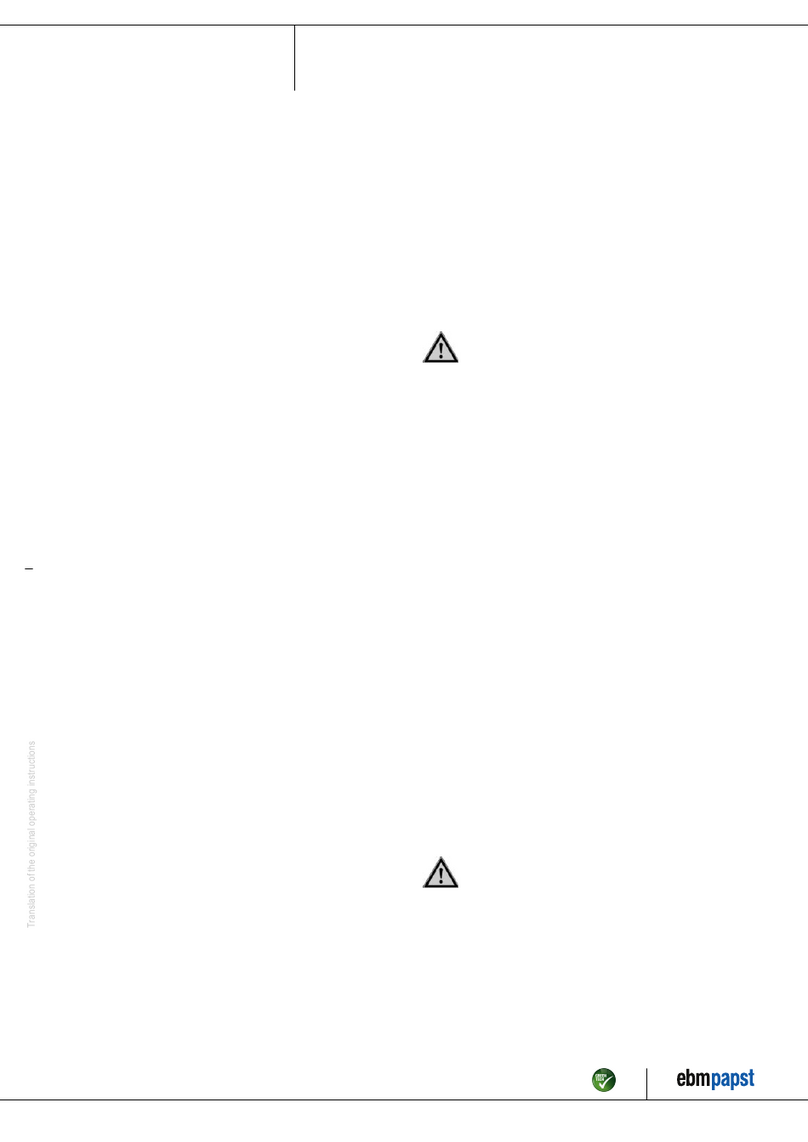
Ebmpapst
Ebmpapst R3G280-RR05-N1 operating instructions
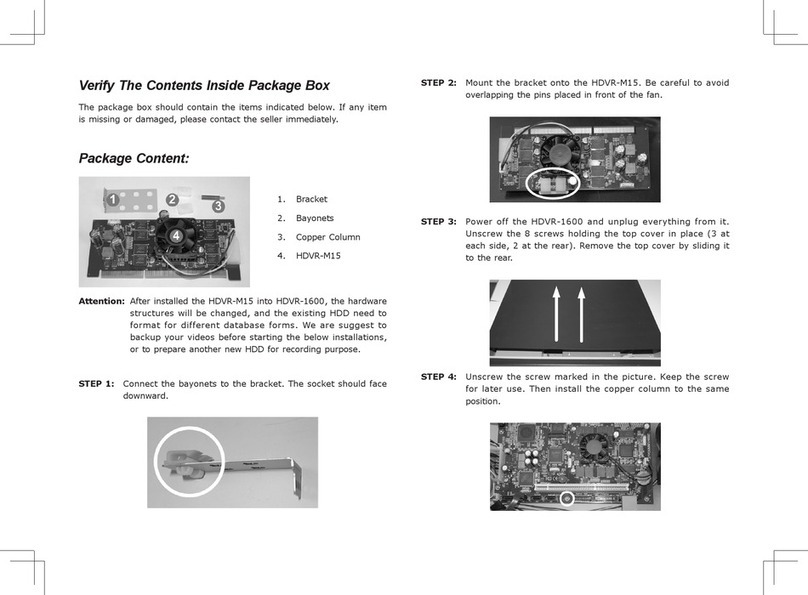
Planet
Planet HDVR-M15 Quick installation guide
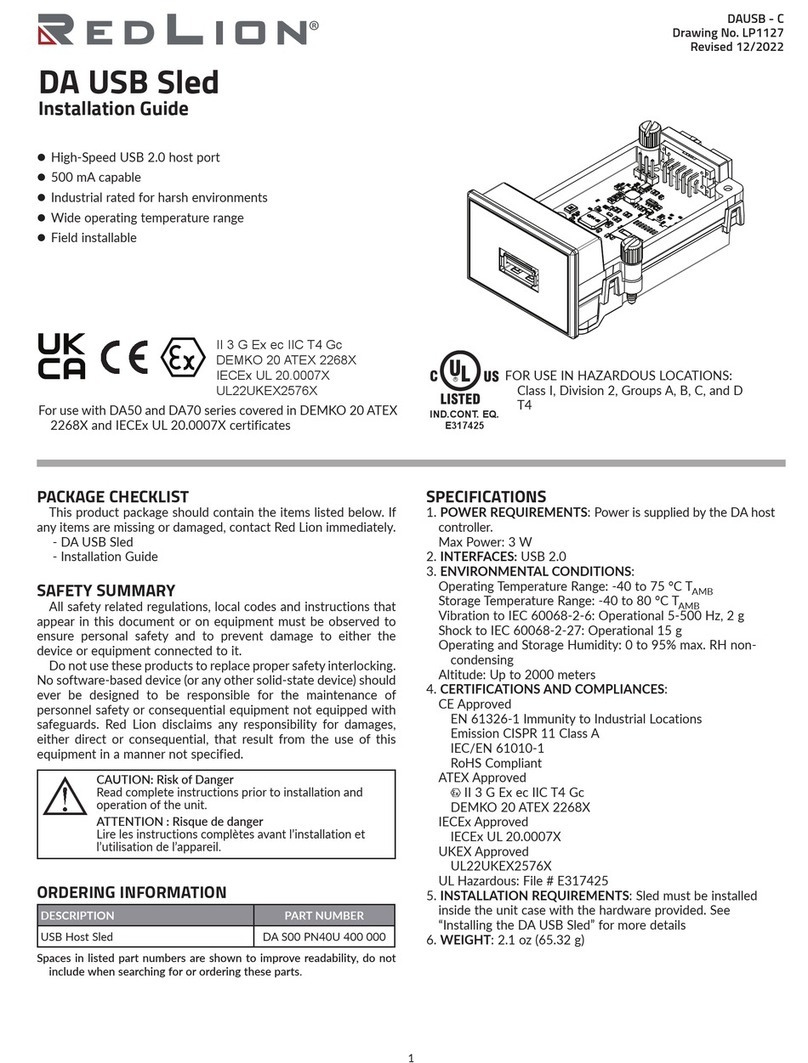
red lion
red lion DA USB Sled installation guide

Audio Control
Audio Control 7.1 Channel THX Ultra 2 Theater Processor manual
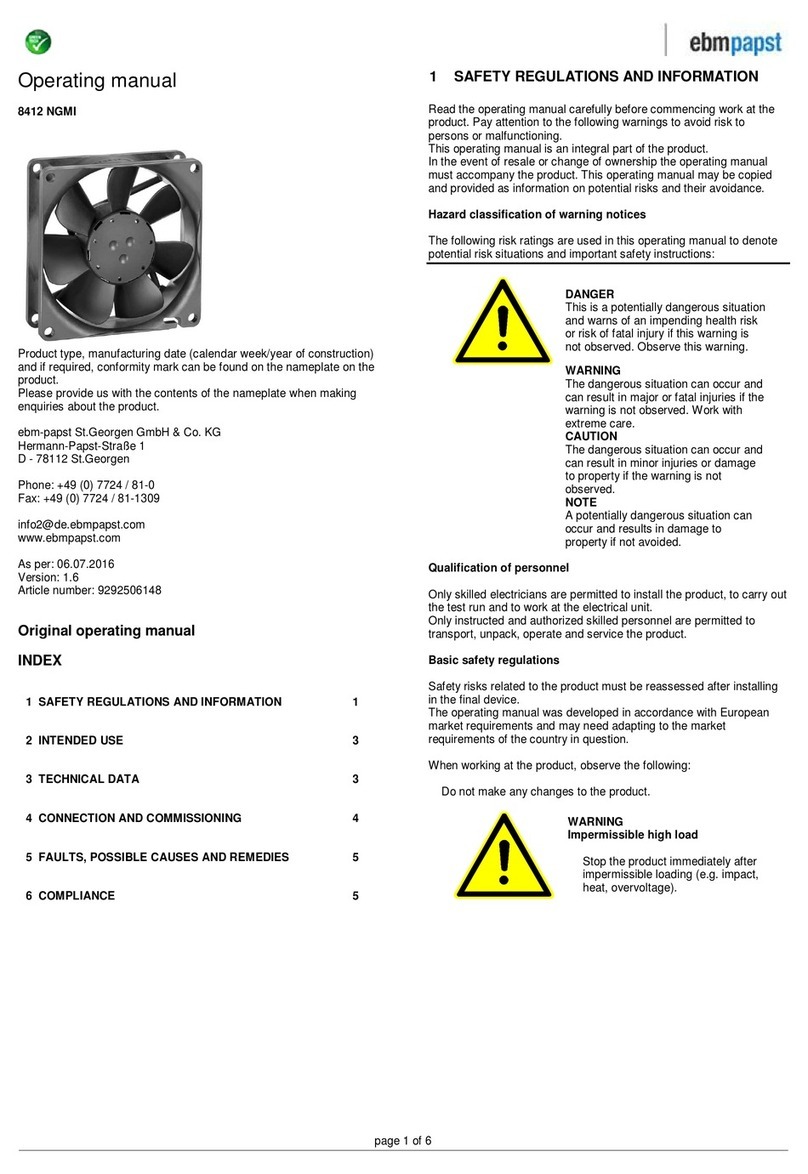
Ebmpapst
Ebmpapst 8412 NGMI operating manual

